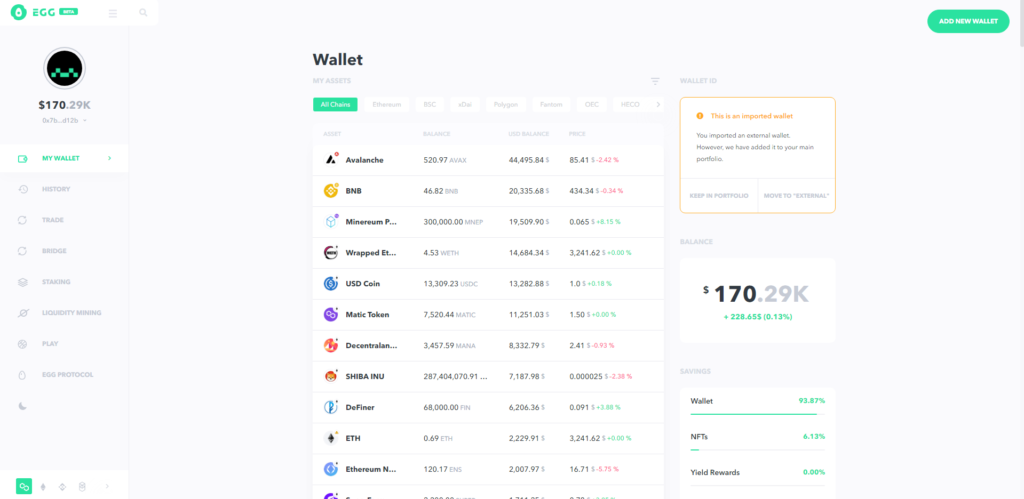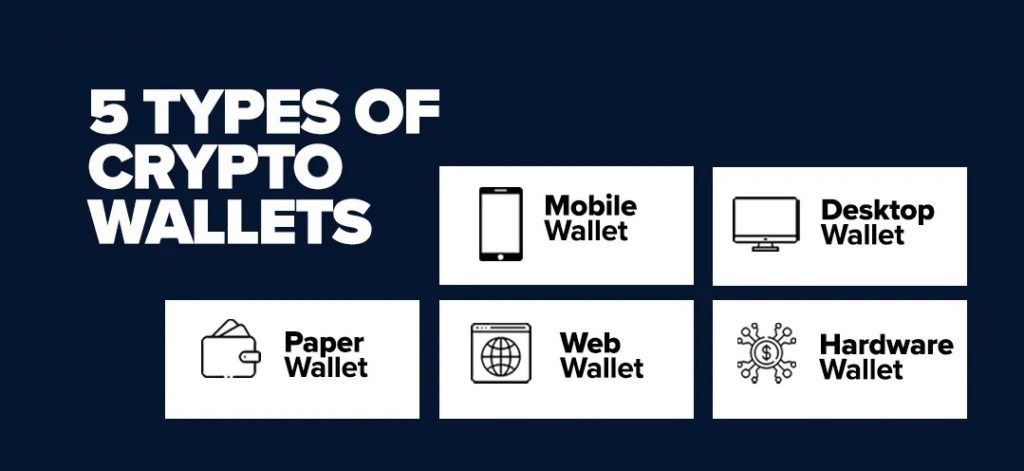Table of Contents
The launch of the Web3 wallet sets new standards for the industry by reinventing new ways to own and benefit from content, identities, and assets as we move to the next generation of the Internet.
At the heart of the Web 3.0 era are decentralized finance or DeFi applications. These are regular websites that use blockchain technology as their engine. You need a Web3.0 cryptocurrency wallet to connect to this new DeFi architecture. Web 3.0 wallets can be managed in a variety of ways using DeFi, including token exchange, lending, and staking.
A wallet is needed to enter the crypto world as it performs some important tasks in a Web3 environment. For this reason, this article will continue to delve into the crypto industry and answer the question, “What is a Web3 wallet?”
What is a Web3 Wallet?
Web3 wallets are like bank accounts, they allow users to store, send, and receive different types of cryptocurrency tokens. The tokens supported by a particular wallet depend on the particular implementation of the wallet. In addition, many wallets also support Ethereum-based tokens.
Wallets can be used to interact with decentralized applications (dApps) and execute transactions on the blockchain. To use dApp, you need a wallet that can connect to dApp’s smart contracts on the Ethereum network. The wallet does not hold the cryptocurrency itself. Instead, it stores information that allows access to digital assets.

How to use Web 3.0 wallets
To use the Web 3.0 wallet, you must first create an account.
- You can do this by creating a new wallet from the wallet address provider’s website. Then you will be prompted to enter the password to create a username.
- Once your account is created, you need to connect your wallet to the Ethereum network. To do this, select the Connect to Network option on the wallet website. Next, you need to enter your Ethereum address and password.
- Once the wallet is connected to the Ethereum network, it can be used to interact with dApps and execute transactions on the blockchain.
Cryptocurrencies consist of three main components:
- Private Key: This is a unique code that gives you access to your digital assets. It’s important to keep this key secure as someone else can use it to access your property.
- Public Key: This is the unique key that enables other users to send you cryptocurrency assets.
- Seed phrase: This is a set of 12 words that you can use to recover your wallet if you lose your private key. It’s important to keep this set safe as it can be used to access your digital assets if you lose your wallet.
Types of wallets in Web3
- Hot Wallets
- Cold Wallets
- Software Wallets
- Paper Wallets
- Web3 Wallets
- Desktop Wallets
- Mobile Wallets

Why do you need a Web3 wallet?
Since the beginning of the crypto revolution, the course is headed to decentralization and in order to be a part of it you need to own a Web3 wallet address in order to participate in a DeFi features such as trading, staking, liquidity mining, minting, creating, selling and storing NFTs, participating in Real Estate Tokenization, City Tokens and much more.
You can of course use the centralized exchanges and their wallets for some of the DeFi services listed above, but the centralized exchange come with a higher risk where you don’t have full control over your funds, they are stored in a centralized way and there is a possibility of losing your funds while decentralized Web3 wallet providers offer full wallet ownership where you are protected with a seed phrase or a private key.
Therefore, Web3 wallets allow users to easily access dApps because they need crypto assets to interact with most applications. This allows the user to authenticate themselves with the wallet and ensure that they have the funds needed to pay for the transaction.
Most of them serve the same purpose. However, they are a little different and unique in their own way. Therefore, we will list some of the most famous Web3 wallet providers out there:
- MetaMask
- Trust Wallet
- Wallet Connect
- MyEtherWallet,
- TorusWallet
Web3 Wallet Benefits
- The first benefit of using the Web3 wallet is the possibility to have full control over your cryptocurrency tokens.
- The second reason why you`d want a Web3 wallet is that it`s more convenient.
- Web3 wallets enable you to be able to access different blockchain networks.
- Web3 wallets are the key to accessing different decentralized apps by simply holding your cryptocurrency tokens.
- Users can authenticate themselves with a Web3 wallet and use a smart contract to verify that they have the funds needed to complete the transaction.
Conclusion
Regardless of the wallet you use, it is important to back up and store your wallet data files and seed phrases. Loading cryptographic access can be harmful, so it is essential to back up and store your wallet data files and seed phrases.
There are different wallets, each with its own strengths and weaknesses. The best wallet for you depends on your needs and tastes. Overall, software wallets are more user-friendly and over time we see a shift towards more innovative crypto wallets. Hardware wallets are the safest but can be expensive. Software wallets are less secure but more convenient. Web wallets are the least secure, but you can easily access the ciphers from anywhere.
Each wallet has its own set of features, so it’s important to choose the one that suits your needs. Regardless of which wallet you use, it’s also important to remember that you are ultimately responsible for cryptographic security.
Disclaimer: The opinion expressed here is not investment advice – it is provided for informational purposes only. It does not necessarily reflect the opinion of EGG Finance. Every investment and all trading involves risk, so you should always perform your own research prior to making decisions. We do not recommend investing money you cannot afford to lose.
 English
English Français
Français Español
Español Bahasa Indonesia
Bahasa Indonesia 中文 (中国)
中文 (中国) Русский
Русский Português
Português Deutsch
Deutsch

